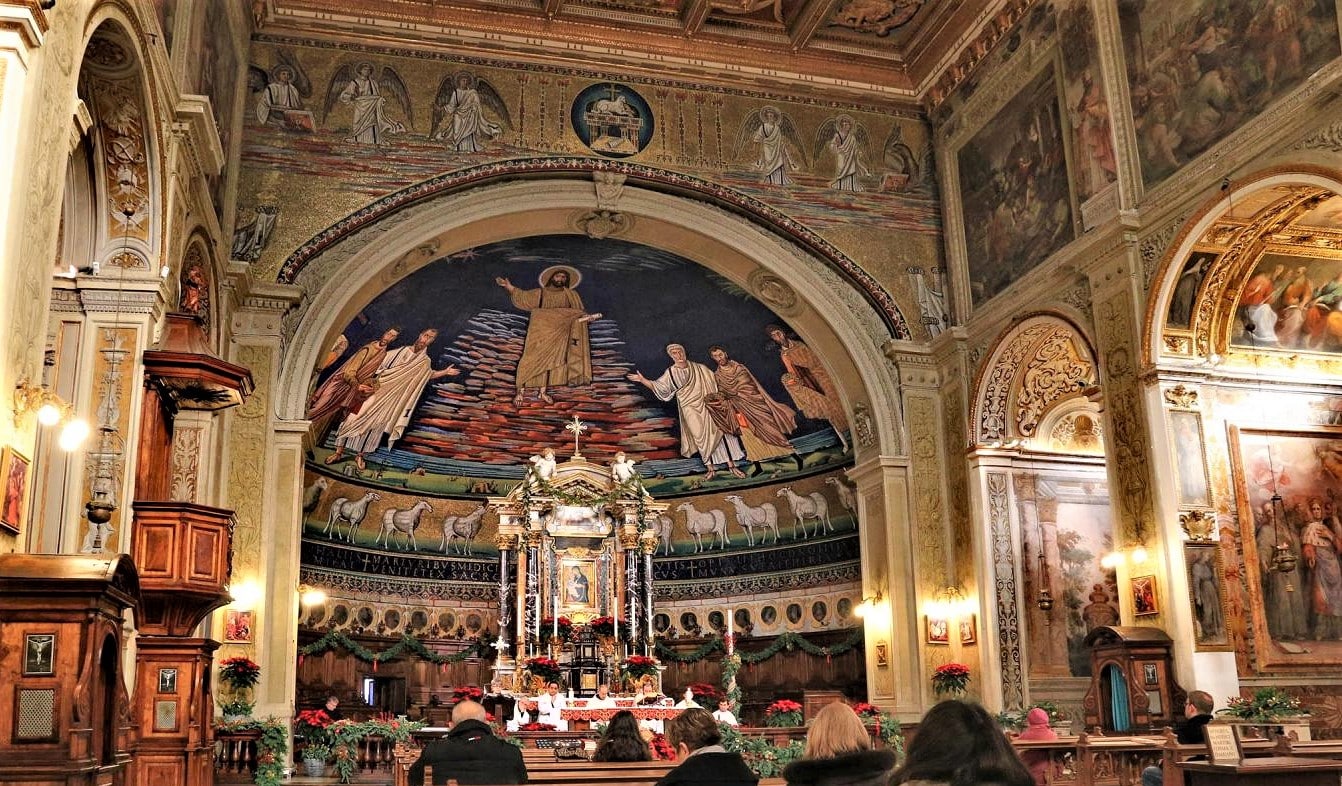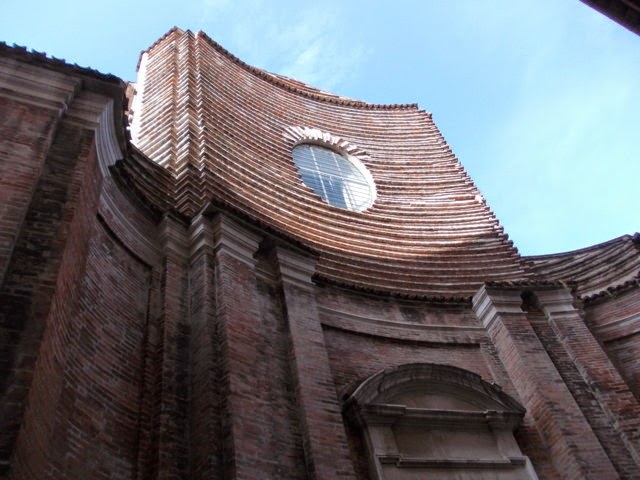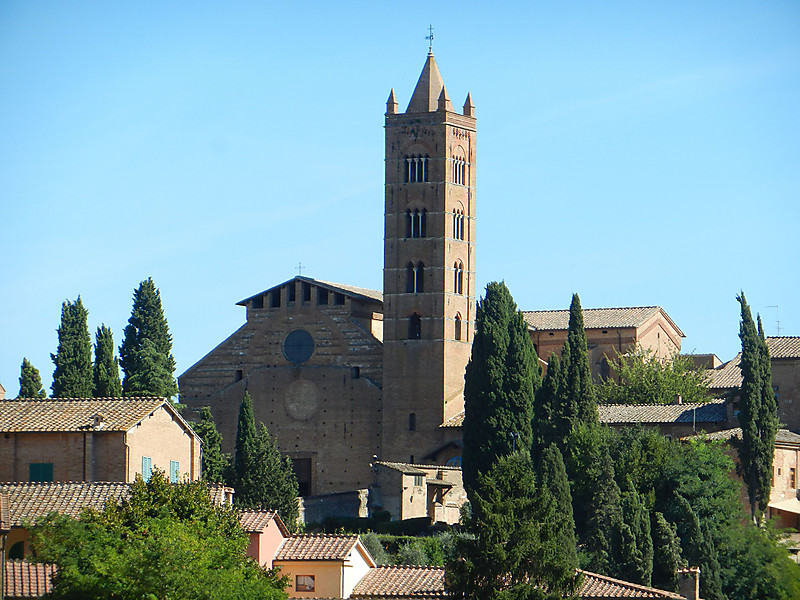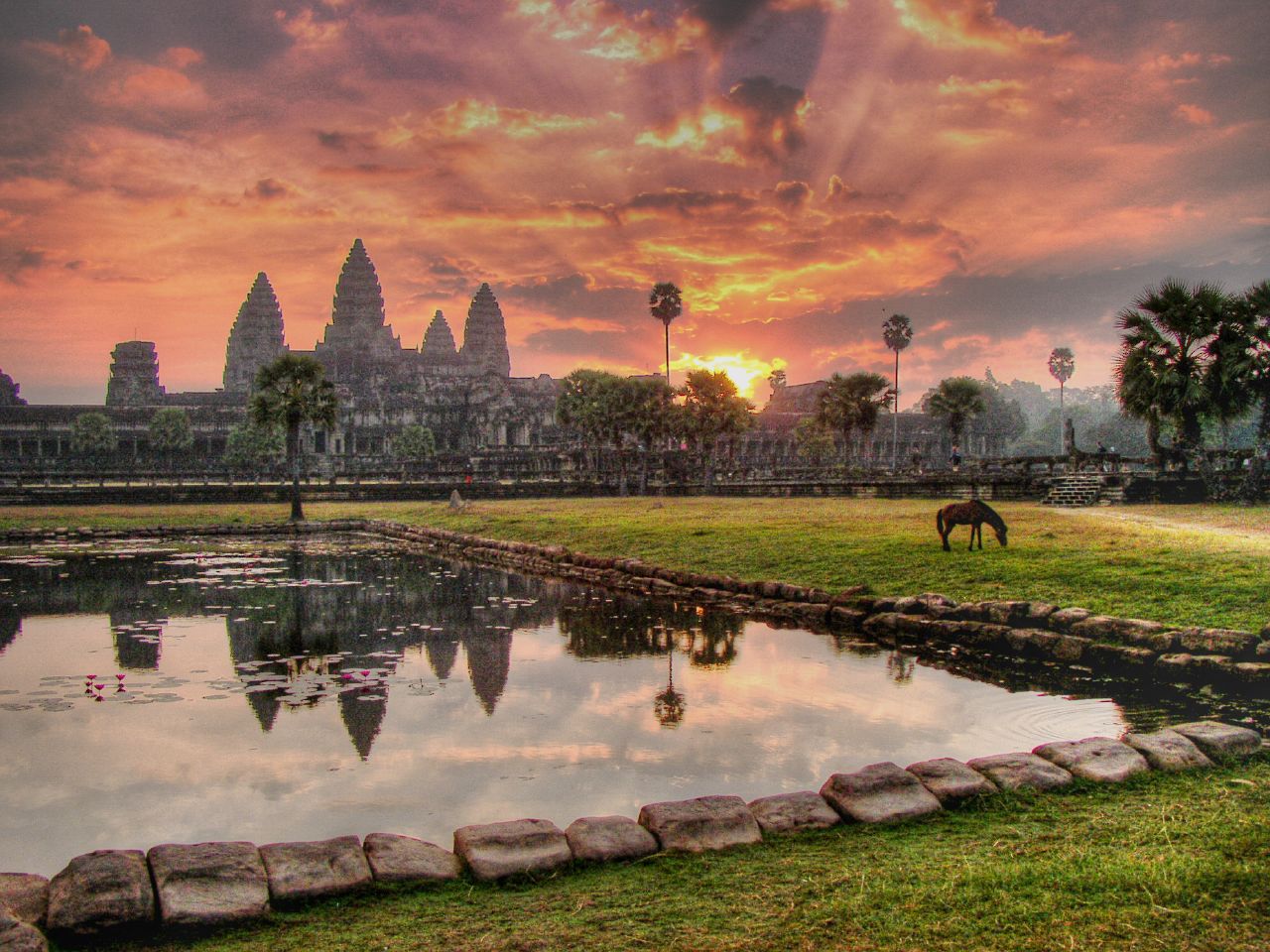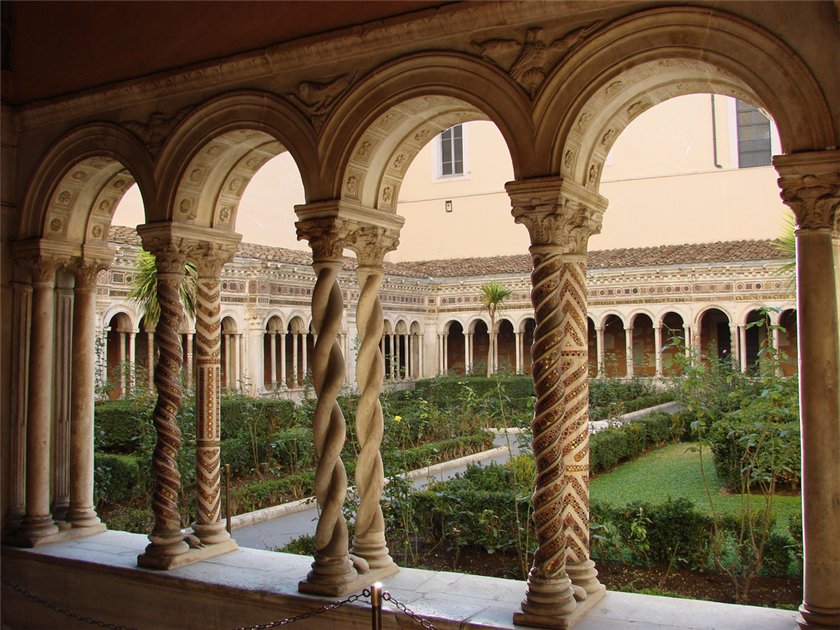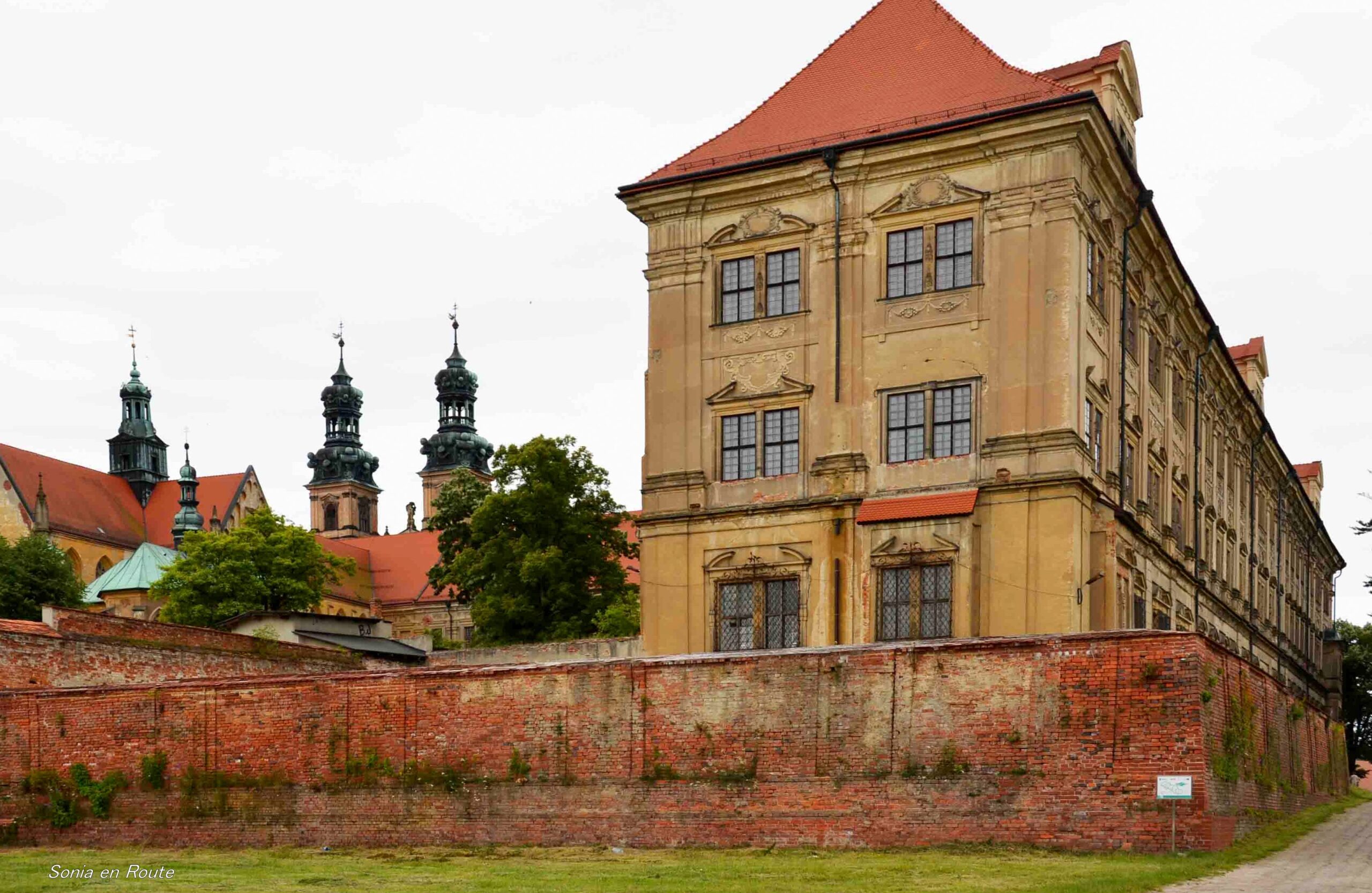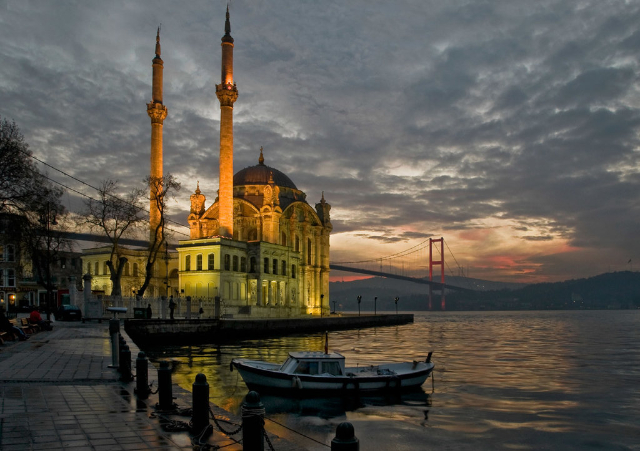The Basilica of Saints Cosmas and Damian located in the heart of Rome is one of the oldest and most fascinating churches. The basilica, dedicated to the two Greek brothers, doctors, martyrs and saints Cosmas and Damian, is located in the Forum of Vespasian, also known as the Forum of Peace. It has the dignity of a minor Basilica. The basilica was built by adapting a couple of rooms of the Temple of Peace, which was accessed from the side of the Roman Forum through a circular entrance hall, already transformed by Maxentius into a temple that, according to a medieval tradition doubted by many, was dedicated to his own deified son, who died prematurely (Temple of the Divine Romulus). The temple was donated by Theodoric the Great, king of the Ostrogoths, and by his daughter Amalasunta in 527 to pope Felix IV, together with the library of the Forum of Peace. The pope united the two buildings to form a basilica dedicated to the two Greek saints, Cosmas and Damian, in contrast to the ancient cult of the Dioscuri, Castor and Pollux, who had been worshipped until the closure of the nearby temple located in the Roman Forum.
The interior of the church, with a single nave, has three chapels on each side, plus a smaller one in front of the present entrance, and a splendid painted and gilded coffered ceiling, with the coat of arms of Urban VIII in the centre and a painting depicting: Glory of Saints Cosmas and Damian (163), oil on canvas, by Marco Tullio Montagna.
he nave ends with a large semicircular apse, dating back to the time of pope Felice IV. Today it is disproportionate due to the raising of the floor and the triumphal arch cut at the sides with the loss of some figures. The apse has a splendid mosaic decoration depicting:
Roman masters, Jesus Christ descends to earth at the moment of the second apocalyptic advent, Lamb of God with twelve converging sheep (526-530), mosaic on the front of the triumphal arch, Apparition of the Lamb of God (late 7th century), mosaic by Roman masters:[3] the work presents the first vision of the Apocalypse: in the centre is the Lamb of God on the throne, with the scroll with the seven seals, while at the sides unfold the seven flaming candelabra and the four angels; of the four symbols of the evangelists, unfortunately only Saint Matthew (the angel on the right) and Saint John (the eagle, on the left) have been preserved, as well as of the Twenty-four Vigils offering crowns, only six have survived the seventeenth-century transformation of the church. In this mosaic the apocalyptic symbols are immersed in the gold background and present a very evident character of symbolic abstraction. The execution of this mosaic dates back to the restoration campaign promoted by Pope Sergius I in 695. The central part of the mosaic decoration underwent extensive reintegration during the restoration campaign of 1936-1937. in the apse, Jesus Christ descends to earth at the moment of the second apocalyptic advent (526-530), a mosaic by Roman craftsmen: in the work, divided into three registers, one can see:
at the top, Jesus Christ, on a carpet of pink and sky-blue clouds, having on the left and on the right St Paul and St Peter, presenting respectively Saints Cosmas and Damian accompanied by Pope Felix IV holding the model of the church and by St Theodore of Amasea. This mosaic is considered a fundamental figurative text in that it is still imbued with the monumental style of late Roman art, which can be seen in the solid and voluminous figures of the saints, or in the almost portrait-like character of Saint Cosmas on the right, as well as in the presence of a superb cobalt blue background, as opposed to the figurative abstraction and the otherworldly gold background of the Byzantine mosaics that followed shortly after. Cosmas and Damian, martyred military doctors, were the object of particular devotion in the Byzantine world, invoked for the healing of illnesses. The mosaic underwent considerable reconstruction during the seventeenth-century restorations that cut out the edges and the figure of Pope Felix IV is completely redone. In addition, the raising of the level of the floor, as already mentioned, has given the mosaic a looming aspect that it did not have previously.
In the center, the Lamb of God with twelve converging sheep.
Along the right side there are three interesting chapels, plus a smaller one in front of the present entrance.
In the vestibule there is a splendid and interesting work:
Roman Ambit, Madonna with Baby Jesus between Saints Cosmas and Damian (last quarter of the 13th century), fresco Neapolitan Crib (18th century), donated to the church in 1939 by Cataldo Perricelli: this is one of the most precious and complete specimens of the typical Neapolitan crib, a faithful reproduction of the uses and customs of the people. In 1988, some of its elements were stolen, so in 1994 the work was restored and integrated by Giulio Strauss, and is now back on display.
The lower church, which is accessed from the cloister, preserves traces of the pre-Cosmatesque floor of the apsidal area, perhaps from the 8th century, and of the Pavonazzetto altar dating back to the 6th-7th century.
In the area below the Rotunda (accessible from the Roman Forum) commonly known as the Temple of Romulus, but today definitively identified by the archaeologist Filippo Coarelli (n. 1936) as the Temple of Jupiter Stator, there are some very degraded wall paintings dating back to the time of Pope Urban IV (1261-1264); attributed to an anonymous Roman artist, the frescoes represent an intermediate moment between the great Byzantine style painting and the new tendencies that will be expressed at the end of the 13th century with Pietro Cavallini (ca. 1240 – ca. 1330) and Jacopo Torriti (mid 13th century – early 14th century).
